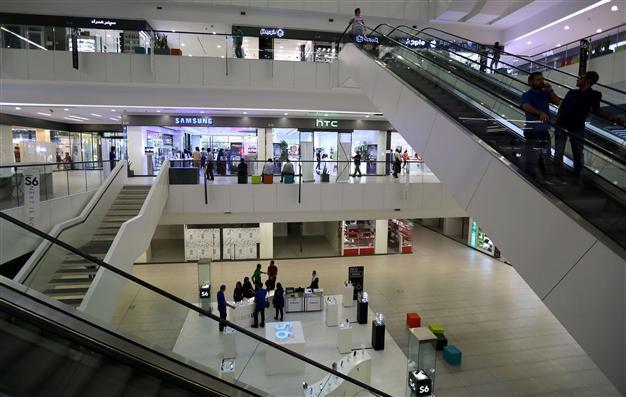Iran’s economy stagnates as shoppers wait for foreign brands
DUBAI - Reuters

Iranians shop at a mall in the north of the capital Tehran on August 19, 2015. AFP Photo
Two months after Iran reached a nuclear deal that will open its markets to the world, officials are warning of economic stagnation as consumers hold off on purchases of domestic goods while they wait for international brands to arrive.From cars to fridges and televisions, shoppers are excited at the prospect of more choice and competition that should force Iranian manufacturers to lower prices and improve quality.
The deal with world powers in July will likely see banking and other sanctions lifted in 2016, making it easier for foreigners to partner with Iranian firms or export to Iran.
Since the deal, Iranian manufacturers have seen growth in sales prices fall far behind inflation, central bank data show, while officials and analysts describe a slowdown in consumer spending and warehouses filling with unsold goods.
“The subsequent rush of Western businesses to enter the Iranian market informed Iranian consumers that soon there will be alternative supplies of consumer goods priced more competitively and with a substantially higher quality and post-sale services,” said Mehrdad Emadi, an economist at the Betamatrix consultancy in London.
That competition is likely to lift Iran’s economy in the long term, but consumer anticipation of lower prices and foreign goods is a challenge to manufacturers used to a captive market.
“Unfortunately some people thought prices would fall suddenly after the nuclear deal, and because of this the market is facing a recession,” Vice President Eshaq Jahangiri was quoted as saying by state news agency IRNA this month.
Mehdi Pourghazi, head of the industrial committee of the Tehran Chamber of Commerce, predicted growth could fall to zero, compared to 3 percent last year, according to the ISNA agency.
Outdated cars
Carmakers, the biggest non-oil sector of the economy, are facing a particularly sharp slowdown.
New car registrations for the first five months of the Iranian year, which starts on March 21, were down 15 percent from the year before, traffic police chief Taghi Mehri was quoted as saying by the ISNA agency this month. A social media campaign urging a boycott of carmakers has recently emerged, highlighting frustration at the lack of choice.
Campaign supporters say Iran’s two carmakers, Iran Khodro and Saipa, take advantage of import tariffs to sell outdated and unsafe vehicles at inflated prices. Reuters was unable to reach the companies for comment.
“I sold my car two weeks ago and wanted to buy a new one, but I decided to wait until the price is lower. Iranian car makers should learn they cannot rule the market by monopoly,” one supporter Mehdi posted on Facebook.
Iran Khodro and Saipa produce versions of foreign cars but do not have access to the latest models.
Consumers say the manufacturers cannot procure parts under sanctions so use replicas or even second-hand parts, resulting in poor standards of safety and reliability.
One customer told Reuters the engine of her new Iranian car burned out within 20 kilometers (12 miles) of the depot.
Last week the Health Minister Hassan Ghazizadeh Hashemi blamed poorly built cars for Iran’s high rate of road deaths which, at around 17,000 a year, is one of the world’s highest.
Foreign-made cars are available, but import tariffs of up to 90 percent put them out of reach of most buyers. A Suzuki Vitara, a small SUV, costs $42,000 in Tehran: several times the average household income and double the Dubai price.
Iran Khodro and Saipa are in talks with foreign carmakers to get access to more up-to-date models after sanctions. Peugeot sent representatives to Tehran this week alongside more than 100 other French firms interested in entering the Iranian market.
Iran’s manufacturing Producer Price Index (PPI) rose just 1 percent year-on-year in the Iranian month to August 22, compared to 11.2 percent in the previous year and far below inflation rates of between 14 and 17 percent.
PPI growth for vehicle manufacturing fell to 3.3 percent from 20.7 percent over the same period, data from the Central Bank of Iran (CBI) showed.
Other sectors of the economy are also suffering.
















